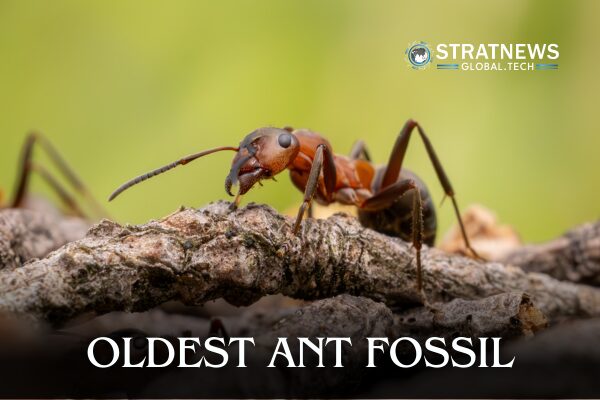Fossil of Oldest-Known Ant Unearthed in Brazil
Scientists have discovered the fossil of the oldest-known ant, a winged insect with fierce scythe-like jaws. It lived about 113 million years ago during the dinosaur era and was preserved in limestone found in northeastern Brazil.
The species, named Vulcanidris cratensis, belonged to a group called hell ants, known for their menacing jaws. These ants thrived during the Cretaceous Period across a wide range but have no living descendants today. A previously found hell ant species, Haidomyrmex, was named after Hades, the Greek god of the underworld.
A Fearsome Ancient Predator
Vulcanidris cratensis was a medium-sized ant, measuring about half an inch (1.35 cm) in length. It had highly specialised jaws, ideal for trapping or impaling prey. Like some ants today, it had wings and was likely a strong flier. It also featured a powerful stinger, much like a wasp.
“It would probably be confused with a wasp by an untrained eye,” said Anderson Lepeco, an entomologist at the Museum of Zoology of the University of São Paulo. Lepeco, who led the study, explained that the ant’s mandibles moved vertically rather than sideways, unlike modern ants.
Today, ants display various jaw shapes, but their jaws usually move side to side. This ancient ant’s vertical jaw movement set it apart from all living species.
Fossil Offers New Insight into Ant Evolution
This discovery predates the previous oldest-known ants by roughly 13 million years. Those earlier specimens were found in amber from France and Myanmar.
The fossil’s exceptional preservation in limestone from Brazil’s Crato geological formation allowed scientists to study its anatomy in detail. Although the limestone was excavated decades ago, it entered the São Paulo museum’s collection only about five years ago after being donated by a private collector.
“I was searching for wasps among the fossils and was shocked when I recognised this one as a hell ant,” Lepeco said.
The unique features of Vulcanidris and the existence of similar ants in distant locations during the Cretaceous suggest ants may have evolved much earlier. Molecular studies estimate that ants originated between 168 million and 120 million years ago, and this discovery supports an earlier origin within that range.
A Rich and Thriving Ecosystem
Vulcanidris lived in an ecosystem bursting with life. Fossil evidence shows that it shared its environment with insects, spiders, millipedes, crustaceans, turtles, crocodilians, pterosaurs, birds, and dinosaurs like the feathered Ubirajara. Potential predators included frogs, larger insects, spiders, and birds.
Today, ants have become one of Earth’s most successful and widespread groups. A study published in 2022 estimated that there are around 20 quadrillion ants globally, far outnumbering the human population.
“They are one of the most abundant groups in most environments on Earth,” said Lepeco. Ants contribute by controlling other species, helping plants and insects survive, maintaining soil health, and even decomposing dead organisms.
with inputs from Reuters


